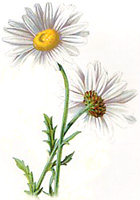
This winter I discovered Swiss Chard. I can't imagine why I'd never tried it before - I've seen it in the supermarket for years. Perhaps because the heads of chard always looked so big - and as I'm the only person in the family who will eat greens, buying large quantities usually means throwing half the stuff away.
But then I saw it in Germany, while we were there for Christmas. In Germany it's called Mangold. And that reminded me of mandrakes.
Now if you're a Harry Potter fan you'll know that mandrakes are plants which are (in mythology) supposed to shriek when you pull them out of the earth. J K Rowling turns their roots into babies' faces as well. Of course, mandrakes are absolutely not connected to Mangolds except in my mind - which, every time I saw them in the supermarket, kept imagining the root under the base of the plant as a screaming baby.
So in the end I had to try them. And they have quickly zoomed to my number one favourite type of greens. I've not yet got round to planting any, but this article from The Guardian says chard can happily be grown in containers, so they're on my list. Chard likes limey conditions and is tolerant of heat and cold - ideal here. It's also a good container vegetable because you don't have to eat it all in one go. Harvest the outer leaves, and the younger, internal ones will keep on growing to give a second crop, and a third, and a fourth. Again ideal for balcony garden where space is at a premium, and large veg which are only going to provide one meal are sometimes a luxury you can't afford. There are different types of chard - some with red ribs, some with yellow - which I've not yet tried. But the white ribbed version is certainly not to miss.
So - here are a couple of recipes.
First of all, don't worry about having too much. Chard is like spinach. You cook an incredible quantity of raw leaves and they reduce down to a spoonful. And anyway it keeps - it's just as good the next day.
The basic recipe is dead simple. You can eat the whole thing, rib and all, or strip the green leaf from the central white rib. Wash the leaves well, cut them into small bits, and pop them into a saucepan with only a tiny amount of extra water - enough to cover the bottom of the pan but no more. Then add a bit of salt and dribble some good olive oil over the top. Cook over a low heat until the leaves "melt" down.
Like that, they're great as a vegetable to accompany a meat dish or to eat on their own. But for me, the best bit is using up the leftovers the next day as ...
Spaghetti with Gorgonzola and Chard

Gorgonzola Dolce has to be the cheese of the Gods. Don't confuse it with Gorgonzola Piccante, which is the older and much stronger version - similar to other blue cheeses such as Stilton.
Gorgonzola Dolce (dolce means "sweet") is soft and creamy with a mild taste. It's no more than two months old, and when out of the fridge for a while should be soft and runny. I could live on it.

Melted down over a low heat in a pan, then combined with some previously cooked chard, it's a wonderful sauce for spaghetti. (We exaggerated a bit with the cheese in the photo above - don't use half so much.)

And apart from the fact that it tastes wonderful, chard is also good for you. It's high in vitamins K, A and C as well as containing various other vitamins and minerals essential for health (see here for a breakdown).
So - for our 200th anniversary, I haven't baked a cake. But if you want to celebrate with me - try some chard.
















































